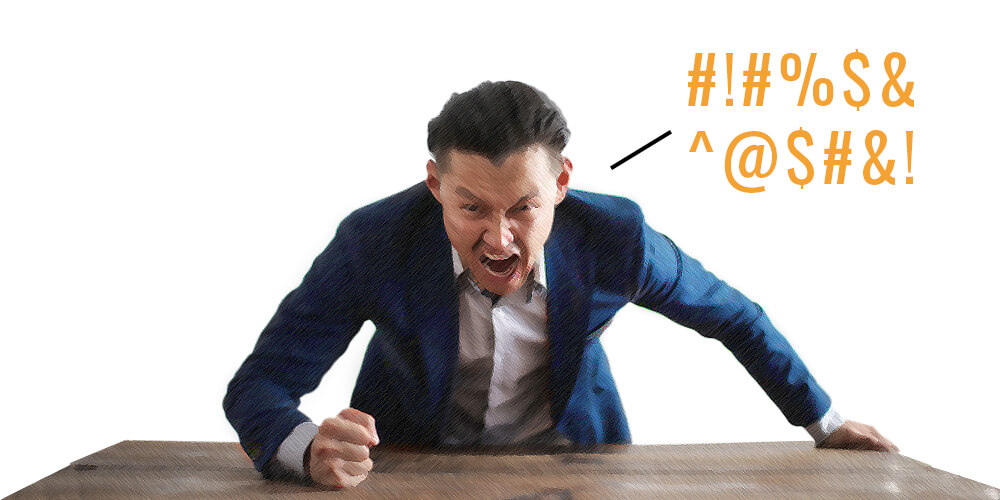If no one had told you otherwise, would you believe that the Earth was flat, the stars were celestial beings, and—beyond the horizon—the sea dropped off into oblivion?
If you’re like most modern people, you believe a different story.
A spherical Earth spins on an axis. The planets revolve around the Sun. Stars aren’t gods of fire—they’re luminous spheroids of plasma. If a crowd of people were to try to convince you otherwise, you’d have centuries of scientific evidence to prove them wrong.
But what if when you woke up each morning, you assumed that nothing much existed beyond your horizon?

What if every time you saw your face in the mirror, it reflected back these words to you: “You’re neither smart nor spectacular enough to succeed,” “You’re too unlucky to ever be loved”?
Would you let those beliefs prevent you from setting sail to see what truly lies on your horizon?
Take ‘em to task
Sadly, there’s no fact-checker in your mind for any beliefs you may have of yourself. There’s no objective eye in your prefrontal cortex to test the validity of the “truths” you’ve formed about yourself or your life.
It’s all too easy to turn conjectures into conclusions. Theories into dogma. Impressions into judgments.
A seemingly harmless statement like “I’m worthless,” “I’m unlovable,” or “I’m doomed to failure” might turn into a belief if you let it. You may even find that you cherry-pick “evidence” from your personal history to prove to yourself that the beliefs you hold are true. Unfortunately, according to scientific research, even your memories are unreliable.
Call it negative self-talk. Self-flagellation. None of us has escaped the clutches of self-limiting beliefs. They creep up when we’re about to step out of our comfort zone. They pull us into cowardice when we feel brave enough to follow a dream. They often lurk below the field of awareness, which makes them even more insidious.

Scientists have been trained to scrutinize any theory they have about the universe.
Isn’t it time to also scrutinize your negative self-talk? To take your self-limiting beliefs to task?
What the Bleep’s Behind a Belief?
When you were born, you didn’t have a single self-limiting belief. You had no concept of a self to believe in. In fact, you didn’t have any positive beliefs either!
If an infant’s brain were a garden, it would be a wild one. No clear paths would wind through the foliage. Infants haven’t been around long enough to have long-term memories. No ingrained connections exist amongst their neurons. They live in a world of limitless possibilities.
As babies’ brains develop, synapses form. Their minds trod down some paths and let go of others. As neurons fire along those pathways, memories, feelings, and beliefs about the world—and the self—take shape.
When infants mature into toddlers, their brains form what you might call a “primitive” belief system: Everything is “mine.” Believing themselves to be kings or queens of the known universe, toddlers often demand others to cater to their swiftly-shifting needs and desires. It’s a necessary stage in cognitive development, which most of us thankfully grow out of.

Does the same thing happen in your brain when you form beliefs in a benevolent creator of the universe, in life after death, or in damnation, for that matter?
In a word, yes! Your brain is always finding ways to achieve homeostasis, or physiological equilibrium. The formation of belief systems is part of that process.
Social scientists ask why cultures transmit systems of belief: Why do native Polynesians see spirits in the waves and Catholics feel certain of the Holy Trinity? Biologists see beliefs as traits of evolution: Which social and emotional interactions have led to their formation?
What forces have led our brains to form beliefs about ourselves?
To neuroscientists, beliefs run deeper than the culture or the social and environmental contexts. They represent complex brain-based phenomena that form the basis of all social exchanges and moral intuitions.1
In essence, beliefs are nothing more than reinforced neural patterns that start formulating at birth. Some are good. Some are bad. And some are downright ugly

Belief in the Good
When you trust your neighbors, your belief in their decency allows you to form healthy social bonds. Without those bonds, you might find it difficult to thrive, let alone survive, in an uncertain world. Likewise, a belief in karma, or “what goes around comes around,” encourages ethical behavior in a community. Codes of good behavior, at best, help you to exist peacefully in close proximity to others.
Belief in the Bad
Beliefs also help you to cope with life when unfortunate things happen. If you grow up with a cat, and that cat gets hit by a bus, it’s comforting to believe in animal heaven. When a volcano erupts and destroys a village, a belief in a just and fiery god might help you make sense of the devastation.

Belief in the Ugly
Likewise, when you say to yourself, “I’m unworthy,” “I’m ugly,” or “I’m not smart or good enough,” your brain might be trying to make sense of personal misfortune. Your brain dislikes uncertainty. It wants to know why bad stuff happens, so it can avoid that stuff in the future. To maintain psychological equilibrium, it predicts what will happen based on what it already knows. Although your brain is a complex and intricately fascinating thing—it is also incredibly lazy. If it can operate with minimal effort, it will.
Think you’re unworthy of love? Maybe your brain is just protecting you from the disappointments inherent in human relationships. Trouble is, when you meet someone who finds you worthy of their love, your disbelief will prevent you from experiencing it.
Believe that you can’t double your income or get into the best shape of your life? Those beliefs have consequences too. Whatever sensory information that enters your frontal lobes depends on what you believe or don’t believe.2 When you scroll past a lucrative work opportunity, and don’t believe you’re worth it, the good news may never make it into your conscious awareness. When you win a free pass to the best gym in town, you may never use it.
Your actions in the world and your expectations of what’s possible follow your deeply-held biases and beliefs—even if you’re unaware of them!
Where in the Brain is Belief?
Specific patterns of brain activity play different roles in the theater of belief. Your posterior parietal cortex, for example, plays a key role in spatial representation of objects. It receives multimodal sensory input and translates that information to help you plan concrete actions in the world. If you experience thirst and run towards a mirage believing it’s fresh water, you’re engaging the networks in your posterior parietal cortex.3

Other areas of the brain, like the prefrontal cortex behind the eyes, engage in abstract reasoning. Whenever you believe anything about yourself—whether it’s “I’m a mess” or “I’m the best thing since sliced bread,” you engage brain networks involved in memory retrieval and imagery.4 Those memories often contain strong emotional content, which influence how you feel in the present and drive how you’ll behave in the future.
The default mode network, or what some researchers call “the imagination network,” plays a central role in formulating and maintaining beliefs about who you think you are. It’s the network that governs autobiographical memories. It daydreams about who you were yesterday and who you’ll become tomorrow.

The more you recall autobiographical events, the stronger the neural pathways that carry those memories will get. That’s how you form a self-concept; it’s what builds your identity. Freud refers to the whole thing as the “ego.”
Whatever you call it, a consistent belief in who you are as a person also has an evolutionary purpose. Without a stable sense of self, life would be a helluva thing to navigate.
Hard to Believe
Now, this may be hard to believe—but every belief you have about yourself is “self-limiting.”
Do you believe that you are good? Bad? Ugly? Rich? Poor?
Whatever you believe and however you believe it, your beliefs are fencing in who you truly are. As William Shakespeare’s Hamlet says in Act 2, Scene 2 of Hamlet, the Prince of Denmark: “there is nothing either good or bad, but thinking makes it so.”
If you think unequivocally that you are a “good” person, might your beliefs prevent you from appreciating the full spectrum of your personality? Believing in your unassailable goodness can lead to all forms of self-denial or make you self-righteous. But if you believe yourself to be a “bad” person, is it any better?
What’s the Solution? Innercise™!
Train your brain to keep those self-limiting beliefs from running wild and unverified in your mind. Just as you wouldn’t drink milk past its due date, don’t swallow and regurgitate ideas about yourself just because they’re sitting on the front shelf of your brain!
You exercise your leg muscles when you walk an extra mile. Now walk an extra mile in your mind. Innercise the “muscles” (or synapses and neurotransmitters) that form healthy neural connections. Keep your brain agile, responsive, and awake.
Expand your potential for deeper levels of awareness. Whenever your default mode network stirs up beliefs about who you think you are, notice those beliefs for what they are—imaginary constructs. Loosen your grip on them, so they loosen their grip on you.
But first, take a moment to notice the pattern of your breathing. Is it quick? Soft? Labored?
Whatever you’re experiencing in each breath, let go of judgment. Let go of blame, shame, guilt, or justification.
Notice your physical body in the present moment. If it helps you to stay present, gently caress the palms of your hands. Experience pleasure, without self-judgment, blame, shame, guilt, or justification.
If beliefs arise, notice them. But let go of any emotional attachment to them. Observe without labeling.
When you feel relaxed and steady in your body and mind, tap into your inner wisdom, your expert innerciser.
Ask your “Einstein Brain”:
- What beliefs do I have about myself that reign me in from reaching my potential?
- What is holding me back from what I truly love doing?
- Where might those beliefs come from?
- Are they REALLY true? What evidence do I have to the contrary?
Write your answers down. Now read them back. Slowly. Calmly. Objectively.
Whatever self-limiting beliefs you have, you’ve taken part in constructing them. You also have the power to let the story and old references go. Just like children once believed in Santa Clause and the Tooth Fairy, it’s time for you to let go of beliefs about yourself that aren’t true.

When you get some healthy distance from your self-limiting beliefs, relish in that newfound freedom. The more you do that, the more likely it will develop into a habit. It feels good to sit in the driver’s seat in front of an open road.
In that space of freedom, it’s your call. It’s your turn. Hands-on the wheel.
Choose to believe something new about yourself. Go down a different road. Play a new part in your own life. Believe in your self-worth, your beauty, your potential. Whatever you wish.
Do you believe that you can meet your financial goals this year? Why not? What’s holding you back? Is it something tangible? Can you name the limitations you’re putting on your financial freedom? Write those barriers down and see them for what they are.
Do the same for any goal you might have, whether it’s love or work, or travel.
Now that you know a little bit more about what self-limiting beliefs are, isn’t it easier to sail past them towards all the exciting possibilities that lie on your horizon?
Start believing that you are more than good enough. More than worthy enough. More than skilled and deserving enough to achieve every one of your goals and dreams!
I believe that you are. I believe that with the right mindset…you are unstoppable!
Endnotes
1. Harris, Sam, Jonas T. Kaplan, Ashley Curiel, Susan Y. Bookheimer, Marco Iacoboni, and Mark S. Cohen. “The
Neural Correlates of Religious and Nonreligious Belief.” PLoS ONE 4, no. 10 (2009).
https://doi.org/10.1371/journal.pone.0007272.
2. Rao, SathyanarayanaT.S, MR Asha, JagannathaK.S Rao, and P Vasudevaraju. “The Biochemistry of Belief.” Indian
Journal of Psychiatry 51, no. 4 (2009): 239. https://doi.org/10.4103/0019-5545.58285.
3. Darby, Susan A., and Robert J. Frysztak. “Neuroanatomy of the Spinal Cord.” Clinical Anatomy of the Spine, Spinal
Cord, and Ans, 2014, 341–412. https://doi.org/10.1016/b978-0-323-07954-9.00009-8.
4. Kaplan, Jonas T., Sarah I. Gimbel, and Sam Harris. “Neural Correlates of Maintaining One’s Political Beliefs in the
Face of Counterevidence—Scientific Reports.” Nature. Nature Publishing Group UK, December 23, 2016.https://doi.org/10.1038/srep39589.










I really like reading through a post that can make men and women think. Also, thank you for allowing me to comment!
This is my first time pay a quick visit at here and i am really happy to read everthing at one place
I just like the helpful information you provide in your articles
I’m into this.i was the one who was told your no good.you don’t comprehend stuff.they spoke German as far as I could tell.im 72 now been through crap with family n friends.i do have my own beliefs..they cant change my feelings..i do understand you.
Pingback: How to Have Unstoppable Self-Confidence – John Assaraf
Pingback: Unlock Your Inner Genius – John Assaraf
Pingback: How to End Self-Sabotage – John Assaraf